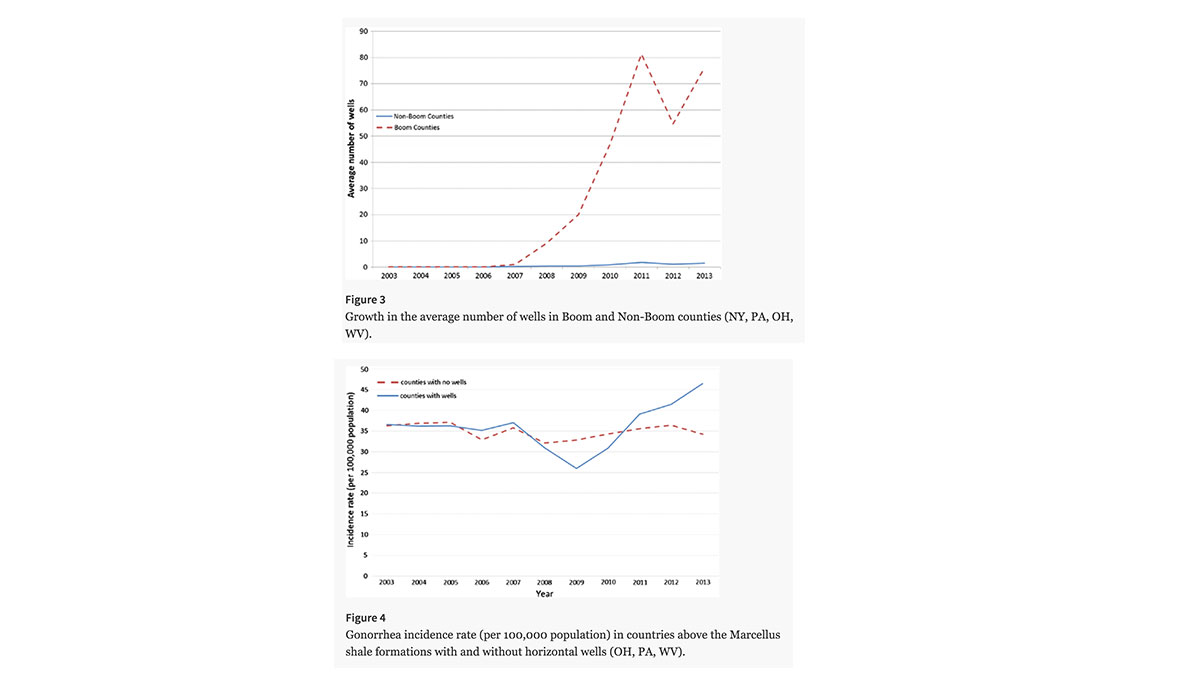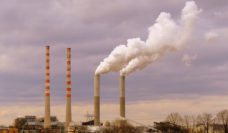Hydraulic fracturing, or fracking, is the process by which natural gas and oil are extracted from underground reservoirs using specialized drilling processes. The United States’ largest source of natural gas comes from the Marcellus Formation, 104,000 square miles of underground shale rock that spans Ohio, Pennsylvania, New York, and West Virginia.
In some communities fracking is an essential boom for local economies that brings jobs, higher wages, and lower unemployment rates. But the fracking industry can also have a negative effect on boom communities.
A 2017 study conducted by Komarek and Cseh found fracking activity in boom counties to be associated with a 20% increase in new gonorrhea cases between 2003 and 2013.
The top graph provides a timeline showing boom counties experienced a rapid increase of new wells starting in 2006. The contrast with non-boom counties is stark. The second graph (figure 4) shows a divergence in the number of new gonorrhea cases per year in counties with and without fracking. The beginning of the divergence corresponds with the onset of fracking activity in 2006. Although rates decrease in the first three years of fracking, there is a dramatic 20% increase in the last four years.
The 20% increase in gonorrhea rates in the Marcellus Shale region is much higher than the 2-3% increase observed across the country. Only diagnosed cases can be recorded by the CDC, which means the true number of people affected is under-reported. The United States spent $15.6 billion dollars in 2008 on treating sexually transmitted infections, with $162.1 million spent on gonorrhea alone. Understanding how fracking activity impacts a community will help local government and public health organizations establish prevention programs to protect community health and reduce health care costs.
Databyte via Tim Komarek and Attila Cseh, Fracking and Public Health: Evidence From Gonorrhea Incidence in the Marcellus Shale Region. Journal of Public Health Policy.













